Filter by
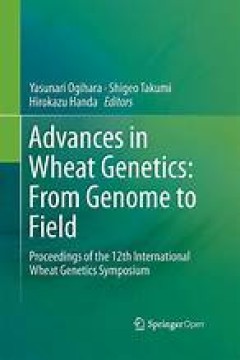
Advances in Wheat Genetics: From Genome to Field
This proceedings is a collection of 46 selected papers that were presented at the 12th International Wheat Genetics Symposium (IWGS). Since the launch of the wheat genome sequencing project in 2005, the arrival of draft genome sequences has marked a new era in wheat genetics and genomics, catalyzing rapid advancement in the field. This book provides a comprehensive review of the forefront of wh…
- Edition
- 1
- ISBN/ISSN
- 978-4-431-55675-6
- Collation
- -
- Series Title
- XVI, 445
- Call Number
- 572

The Wheat Genome
This open access book provides the first comprehensive coverage of the wheat genome sequence since the publication of the draft and reference sequences for bread wheat and durum wheat. It presents an overview and all aspects of the gold standard sequence of the bread wheat genome, IWGSC RefSeq v1.0 and its subsequent improvements through 2022 (IWGSC RefSeq v2.1), as well as the sequencing of mu…
- Edition
- -
- ISBN/ISSN
- 978-3-031-38294-9
- Collation
- XIV, 320
- Series Title
- -
- Call Number
- -
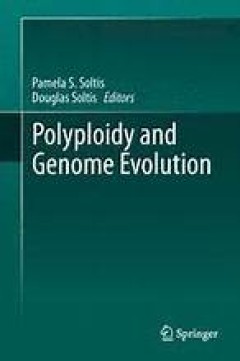
Polyploidy and Genome Evolution
Polyploidy – whole-genome duplication (WGD) – is a fundamental driver of biodiversity with significant consequences for genome structure, organization, and evolution. Once considered a speciation process common only in plants, polyploidy is now recognized to have played a major role in the structure, gene content, and evolution of most eukaryotic genomes. In fact, the diversity of eukaryo…
- Edition
- 1
- ISBN/ISSN
- 2012
- Collation
- Biologi
- Series Title
- -
- Call Number
- 570
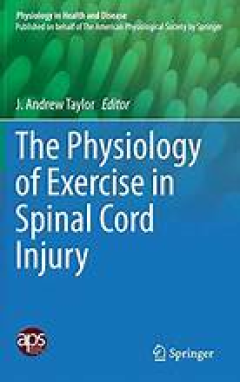
The Physiology of Microalgae
This book covers the state-of-the-art of microalgae physiology and biochemistry (and the several –omics). It serves as a key reference work for those working with microalgae, whether in the lab, the field, or for commercial applications. It is aimed at new entrants into the field (i.e. PhD students) as well as experienced practitioners. It has been over 40 years since the publication of a …
- Edition
- 1
- ISBN/ISSN
- 978-3-319-24945-2
- Collation
- X, 681, 65 b/w illustrations, 166 illustrations in colour
- Series Title
- Developments in Applied Phycology
- Call Number
- -
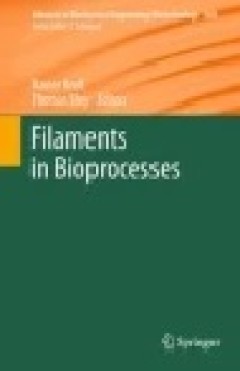
Filaments in Bioprocesses
This book review series presents current trends in modern biotechnology. The aim is to cover all aspects of this interdisciplinary technology where knowledge, methods and expertise are required from chemistry, biochemistry, microbiology, genetics, chemical engineering and computer science. Volumes are organized topically and provide a comprehensive discussion of developments in the respective f…
- Edition
- -
- ISBN/ISSN
- 978-3-319-20511-3
- Collation
- X, 364
- Series Title
- Advances in Biochemical Engineering/Biotechnology
- Call Number
- -
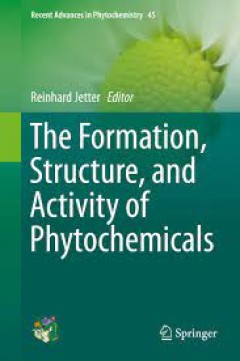
The Formation, Structure and Activity of Phytochemicals
This text provides both review and primary research articles for a broad audience of biologists, chemists, biochemists, pharmacologists, clinicians and nutrition experts, especially those interested in the biosynthesis, structure, function and/or bioactivity of plant natural products. Recurring themes include the evolution and ecology of specialized metabolites, the genetic and enzymatic mechan…
- Edition
- 1
- ISBN/ISSN
- 978-3-319-20397-3
- Collation
- XIII, 209
- Series Title
- Recent Advances in Phytochemistry
- Call Number
- -
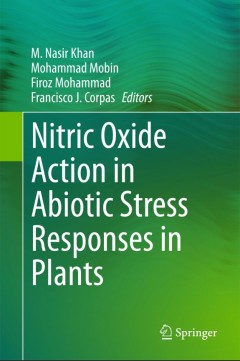
Nitric Oxide Action in Abiotic Stress Responses in Plants
This book offers an up-to-date review of the regulatory role of nitric oxide (NO) changes in the morphological, physio-biochemical as well as molecular characteristics of plants under abiotic stress. The first of two parts comprises four chapters and focuses on the properties, chemical reactions involving NO and reactive nitrogen species in plants. The second part, consisting of eleven chapters…
- Edition
- 1
- ISBN/ISSN
- 978-3-319-17804-2
- Collation
- XII, 252
- Series Title
- -
- Call Number
- -
Redox State as a Central Regulator of Plant-Cell Stress Responses
This book provides an up-to-date overview of redox signaling in plant cells and its key role in responses to different stresses. The chapters, which are original works or reviews, focus on redox signaling states; cellular tolerance under different biotic and abiotic stresses; cellular redox homeostasis as a central modulator; redox homeostasis and reactive oxygen species (ROS); redox balance in…
- Edition
- -
- ISBN/ISSN
- 978-3-319-44081-1
- Collation
- -
- Series Title
- -
- Call Number
- 572
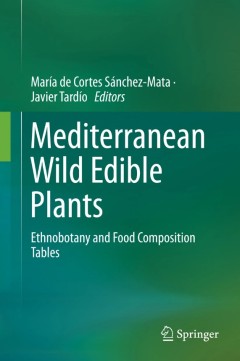
Mediterranean Wild Edible Plants
Dr. María de Cortes Sánchez-Mata, PhD in Pharmacy, is currently a professor in Food Science at the Faculty of Pharmacy, Complutense University of Madrid, Spain. She has performed a continuous research on the analysis of nutrients, antinutrients and bioactive compounds in plant foods, with the focus on human health promotion. Dr. Javier Tardío, PhD in Agricultural Engineering, is currently…
- Edition
- 1
- ISBN/ISSN
- 978-1-4939-3327-3
- Collation
- -
- Series Title
- Mediterranean Wild Edible Plants
- Call Number
- XII, 478
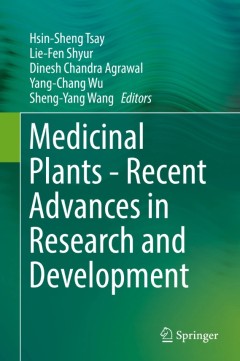
Medicinal Plants - Recent Advances in Research and Development
Since ancient times, plants have been used as a prime natural source of alternative medicines and have played an important role in our lives. The old tradition of medicinal plant application has turned into a highly profitable business in the global market, resulting in the release of a large number of herbal products. People have tried to find different sources of medicines to alleviate pain a…
- Edition
- 1
- ISBN/ISSN
- 978-981-10-1084-2
- Collation
- XXIII, 491
- Series Title
- -
- Call Number
- -
 Computer Science, Information & General Works
Computer Science, Information & General Works  Philosophy & Psychology
Philosophy & Psychology  Religion
Religion  Social Sciences
Social Sciences  Language
Language  Pure Science
Pure Science  Applied Sciences
Applied Sciences  Art & Recreation
Art & Recreation  Literature
Literature  History & Geography
History & Geography